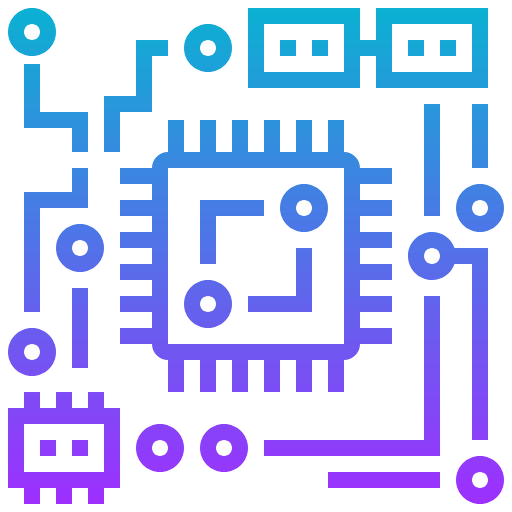
ISVs encounter a chicken-and-egg issue. They will just create on a system if that system has a solid and growing installed base, but platforms can only obtain a solid and growing set up base if ISVs create preferred apps on that system. This took place in the early days of the smartphone market with the intro of the mobile applications and app shops. It will take place once again with third-party, AI-based applications on the new NPU-powered AI smartphones and PCs that are striking the marketplace.
This gadget ranch allows the software program developers to examine their AI-based applications on actual devices in the cloud, often also prior to the tools become readily available. At a recent AI workshop, Qualcomm demonstrated the capability of AI Center to help programmers enhance and deploy a design on-device with “5 minutes and 5 lines of code.”
In the AI environment, Nvidia has handled the function of Apple as the leading architecture on which ISVs are developing. PCs powered by the company’s discrete GPUs basically have an NPU in the type of tensor cores integrated into the Nvidia GPUs. Nvidia’s CUDA system was presented virtually twenty years ago in 2006 and has given that ended up being the de facto typical enabling one of the most mature and recognized programmer ecological community.
These SoC vendors require to learn from the early smart device days and apply efforts that will incentivize ISVs to establish AI applications on their NPU. Raw speeds and feeds alone are not going to win the battle. Enabling the ISVs to take full advantage of performance and power performance capabilities via development atmospheres and devices that make it very easy to create, apply and maximize AI apps is just one aspect of winning ISV mindshare. Cultivating strong, highly engaged developer areas together with large installed bases will certainly additionally be required.
Enabling the ISVs to take full advantage of performance and power performance abilities with development atmospheres and tools that make it simple to develop, implement and enhance AI applications is just one element of winning ISV mindshare. Given its several touch points with the ISV community across all its item lines, Intel has actually developed a Designer Relations Implementation Group to work with ISV efforts.
It is likewise very encouraging to see the initiatives going towards scholastic programs. Involving with academic community is important to winning mindshare of brand-new developers and ensuring long-lasting momentum. Currently is a critical time to develop these connections considering that many colleges remain in their incipient stages of applying AI curricula.
The NPU-powered AI tool ecosystem shows up to have the same fragmented dynamic as the early smartphone market, forcing competition for ISV mindshare since each NPU is special. The NPU-based oppositions to Nvidia are Qualcomm, AMD and Intel, and each business’s NPU is essentially a various direction set design (ISA). ISVs are mosting likely to have to make the same decisions on which NPU to develop apps natively.
It deserves keeping in mind that the GPU-forward method that Nvidia has taken on in the AI COMPUTER– while offering orders of size a lot more performance compared to NPUs for larger LLMs– additionally consumes even more power. This is acceptable in the specialized and fanatic utilize cases and work Nvidia-based AI Computers target. Nonetheless, rivals say that power effectiveness, while supplying the required efficiency, will certainly be required for more consumer and prosumer use instances.
An efficient IDE and ISV connections program can assist damage the poultry and egg mystery by assisting seed the market with an emergency of valuable, effective and value-added applications that can after that drive gadget sales. This efficiency is driven by exactly how very easy each SoC provider’s IDE makes it to develop AI-based applications, in addition to very involved ISV relations initiatives like developer seminars, online forums and areas, and straight engineering assistance.
Apple promptly attained emergency while the various other OS platforms needed to contend to win the hearts, minds and inevitably the development budget plans of the ISVs. Ultimately, Android won with its open-sourced ecosystem, which combined the rest of the mobile phone volume and enabled the ISVs to target not just one OEM however all OEMs who took on Android.
AMD’s software application advancement environment is its Unified AI Software application, which aids ISVs create and release AI-based applications on Ryzen AI-powered PCs. The Unified AI software pile is based upon a single ONNX RT implementation engine that offers velocity on AMD’s GPUs, cpus and npus, and makes it possible for applications to switch acceleration courses in between the different processing devices as required. AMD has established a developer program through which it involves with the ISV designer neighborhood with forums and occasions, in addition to resolving Hugging Face to comprehend which versions are one of the most widely used so they can be enhanced on AMD SoCs.
The competition for ISV mindshare and, ultimately, commercial fostering has started. Currently, Qualcomm’s Snapdragon X collection and AMDs Ryzen AI300 (Strix Factor) are commercially readily available, with Intel’s Lunar Lake expected to show up in the second fifty percent of 2024. As SoCs increase in the next 6 to twelve month, it will certainly become clear which SoC distributor’s ISV campaigns are resonating based upon third-party AI application availability and delivery quantity.
Offered its many touch points with the ISV neighborhood throughout all its item lines, Intel has actually developed a Programmer Relations Implementation Team to coordinate ISV campaigns. The program intends to provide developers a “frictionless out-of-box experience” starting with its AI Computer growth kit.
They make it as easy as possible to pick a design– either one that is pre-trained, open sourced or one that the programmer trains themselves– enhance it and release it for their details SoC-enabled systems. The various other objective is to help the developer maximize performance effectiveness by utilizing the best calculate resource on the SoC (e.g. CPU, GPU or NPU) for the details workload.
They will just develop on a platform if that system has a solid and growing installed base, however systems can just get a solid and expanding mounted base if ISVs establish prominent apps on that system. ISVs can conveniently establish on one system and cross-compile to the various other platform today, but it was not always this straightforward. ISVs had to choose which OS platform to develop on, based on which system supplied the most exposure and downloads, and most ISVs sustained one to three systems.
After 17 years of the contemporary smartphone, the market has converged on two major OS systems. ISVs can easily create on one platform and cross-compile to the other system today, however it was not constantly this simple. In the early years, there were other OS systems like Symbian, Blackberry and Windows Mobile. ISVs needed to choose which OS system to create on, based upon which platform gave one of the most exposure and downloads, and many ISVs supported one to 3 systems.
With its recognized installed isv, community, and base and academic community programs, Nvidia is currently among the designs on which ISVs are developing. With a natural software and hardware system across its numerous gadgets, Apple will likewise likely come to be a significant AI advancement platform.
The concern currently is: which of the various other systems will also achieve success? Something that Qualcomm has going for it is that ISVs can take advantage of their financial investments across not just AI PCs but likewise AI smart devices and software-defined vehicles. On the other hand, AMD and Intel are much more established in the computer environment with mature ISV relationships and heritage applications currently natively readily available on x86 based CPUs.
On-device generative AI has actually arrived at smart devices and PCs, with today’s committed NPUs supporting LLM reasoning approximately around 30 billion parameters. The majority of on-device generative AI applications today are what we categorize as first-party applications– ones that either the tool’s maker or its OS designer has actually established and mounted.
However, a brand-new ecological community of third-party AI applications is being made it possible for to fully recognize the possibility of on-device generative AI. These applications are developed by independent software program suppliers (ISVs) and usually offered on the application store sustaining the OS platform.
1 applications2 ISV
3 ISVs
4 NPU
5 platforms
« Lenovo’s concept laptop unfolds itself and turns to follow youHow to connect a PS5 controller to your laptop (and set it up right) »
